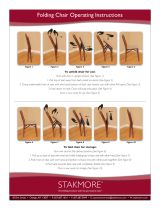
Part No. 1056953 3 9000 Series
CONTENTS
CONTENTS
TABLE OF CONTENTS
SPECIAL NOTES................................................................................ 5
LABEL LOCATIONS ........................................................................... 6
SPECIFICATIONS .............................................................................. 7
SECTION 1 - GENERAL GUIDELINES .................................................. 9
INFORMATION FOR HEALTHCARE PROFESSIONALS/ASSISTANTS ...................................... 9
STABILITY - ALL MODELS .................................................................................................................... 10
STABILITY - RECLINER MODELS ONLY .......................................................................................... 11
OPERATING INFORMATION.............................................................................................................. 11
TIRE PRESSURE ......................................................................................................................................... 13
WEIGHT TRAINING ............................................................................................................................... 13
WEIGHT LIMITATION ........................................................................................................................... 13
SAFETY/HANDLING OF WHEELCHAIRS ........................................................................................ 14
SECTION 2 - SAFETY INSPECTION .................................................. 21
SAFETY INSPECTION CHECKLIST .................................................................................................... 21
TROUBLESHOOTING ............................................................................................................................ 22
MAINTENANCE ....................................................................................................................................... 22
SECTION 3 - FRONT RIGGINGS ....................................................... 24
INSTALLING/REMOVING/USING THE FOOTREST/LEGREST .................................................. 24
FOOTREST HEIGHT ADJUSTMENT .................................................................................................. 25
IMPACT GUARDS/CALF STRAP ......................................................................................................... 25
HEEL LOOP REPLACEMENT ................................................................................................................ 26
RAISING/LOWERING THE ELEVATING LEGREST ASSEMBLY ................................................. 27
SECTION 4 - ARMS ......................................................................... 28
ADJUSTING ARMREST HEIGHT ......................................................................................................... 28
SWING-BACK ARMS .............................................................................................................................. 28
REPLACING DESK/FULL LENGTH ARMREST PAD AND/OR CLOTHING GUARDS
(FIXED HEIGHT ARMS ONLY) ....................................................................................................... 29
REMOVING OR REPLACING ARMREST .......................................................................................... 29
CONVERTING FROM SPACE SAVER TO CONVENTIONAL ARMS OR
CONVENTIONAL TO SPACE SAVER ARMS (9000 XT/XDT WHEELCHAIRS) .............. 30
SECTION 5 - SEAT AND BACK ........................................................ 31
REPLACING THE SEAT UPHOLSTERY ............................................................................................. 31
REPLACING THE BACK UPHOLSTERY ........................................................................................... 32
ADJUSTING THE BACK HEIGHT, BACK ANGLE OR SEAT DEPTH ...................................... 33
ADJUSTING THE SEAT WIDTH ......................................................................................................... 33
SECTION 6 - REAR WHEELS ............................................................ 34
REMOVING/INSTALLING THE REAR WHEELS ............................................................................. 34
REPLACING REAR WHEEL HANDRIM ............................................................................................ 36
REPLACING/REPAIRING REAR WHEEL TIRE/TUBE .................................................................... 36
ADJUSTING THE QUICK-RELEASE AXLE ...................................................................................... 37






















